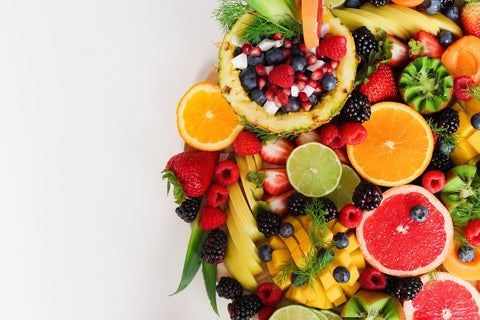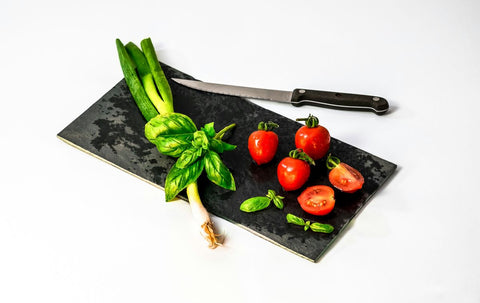
The kitchen cutlery world is unique, with different parts of the world producing distinct types of steel that cater to specific culinary needs. In this analysis of Japanese and German steel, we dive into the unique properties that make each type of steel ideal for certain kitchen tasks. From the precision of Japanese knives to the durable nature of German cutlery, we uncover how these steels are draped in tradition to meet the demands of chefs and home cooks alike.
Japanese Steel: Composition and Culinary Uses
Typical Steel Varieties in Japanese Knives
In my exploration of Japanese cutlery, I've found that the most common steels used in Japanese kitchen knives are VG-10 and VG-MAX. These steels are known for their razor's edge and ability to maintain that sharpness over prolonged use. Japanese steel knives are sharp and precise, which is needed in Japanese cuisine.
Traditional Japanese knives often feature high carbon steel, which provides sharpness and durability. This steel is particularly favored for its fine grain and ability to have a very sharp edge. Here's a brief list of the typical steel varieties you might encounter:
VG-10: Known for its balance of hardness and corrosion resistance.
Damascus: Known for its keen edge and water-like pattern.
Each type of steel has unique characteristics and is chosen based on the specific needs of the chef and the tasks at hand. For instance, a chef's 8" knife made of Damascus steel can be the ultimate kitchen tool for chefs and home cooks.

Thinness: Precision in Cutting
The precision in cutting that Japanese knives offer is unparalleled, mostly because of their exceptional thinness. At just 1.5 millimeters thick, these knives can make the most delicate of slices.
The design of Japanese knives is not just about the blade; the handle plays a crucial role in accuracy. A well-crafted handle provides a comfortable and secure grip, preventing the knife from turning or slipping during use. This makes for an effortless and safe cutting experience.
Japanese steel is often tempered to a high hardness, typically within the 60 – 64 HRc range, which allows for very thin edges. It's important to use them appropriately and maintain them according to instructions:
Do not cut bones or frozen food.
Use a steel cleaver for more demanding tasks.
Regularly sharpen the blade.
German Steel: Composition and Culinary Uses
The Robust Nature of German Kitchen Knives
German knives are tempered to a softer range, typically between 56 and 58 HRc, which contributes to toughness and durability.
The composition of German steel is designed to be resistant to rust, ensuring longevity and easier maintenance. When it comes to handling, the ergonomic polymer handles are made to fit all hands, providing a confident grip. This is especially important when shifting between tasks, from peeling garlic to chopping vegetables.
The thoughtful design extends to safety features, such as the inclusion of HACCP protection color-coded pins in the handles. These pins serve as a visual guide, promoting proper knife usage for different types of food. The knife blades, made of German DIN1.4116 stainless steel, are not only hard at HRC 56+/-1 but also boast a finely tapered ground edge for precision cutting. The combination of Santoprene for comfort and polypropylene for durability in the handle construction further exemplifies the meticulous attention to detail in German cutlery.
Common Steel Types in German Cutlery
A predominant material is the 1.4116 steel, closely akin to X50CrMoV15. Despite different branding by various companies, the composition remains largely uniform across kitchen knives.
This steel is typically tempered to a softer range, usually between 56 – 58 HRc, which contributes to the robust nature of German knives. They are designed to withstand rigorous tasks, such as breaking down whole chickens, without the risk of chipping. This softer tempering contrasts with the Japanese approach, where knives are crafted to be thinner and harder, aiming for precision in cutting with a higher hardness scale.
Steel Expansion
The incorporation of steels from other European countries like Sweden and Austria into Western-style knives indicates a growing trend in the industry. Companies are seeking out materials that offer both toughness and ease, broadening the horizons of culinary tools.
Look for more versatility to come from kitchen knives in the future, with a focus on easy maintenance. With an eye on the future, the traditions of German and Japanese steel production will continue to expand and incorporate modern technology.



